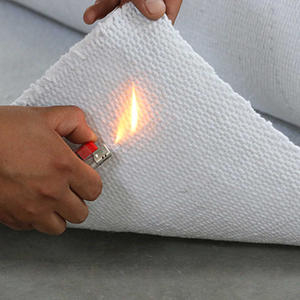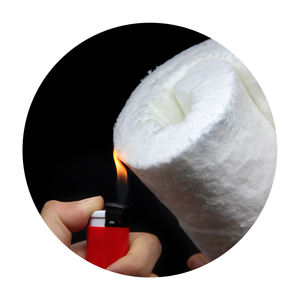Professional industry ceramic supplier, silicon nitride, silicon carbide, aluminum nitride and any other kinds of ceramics.
PRODUCT PARAMETERS
Description
Overview of Insulating bulk ceramic fiber or biosoluble fiber for various ceramic fiber products.
Insulating bulk ceramic fiber or biosoluble fiber for various ceramic fiber products. is a lightweight, high-temperature insulation material composed primarily of alumina-silica. It is manufactured through a melting and spinning or blowing process, resulting in a flexible, wool-like textile. This material is engineered to provide exceptional thermal management, conserving energy and protecting equipment in extreme temperature environments across various industries.
Features of Insulating bulk ceramic fiber or biosoluble fiber for various ceramic fiber products.
-
Excellent Thermal Stability: Withstands continuous operating temperatures up to 1260°C (2300°F) and higher for certain grades, with minimal shrinkage.
-
Low Thermal Conductivity: Provides highly efficient insulation, reducing heat loss and improving energy efficiency.
-
Lightweight & Low Heat Storage: Offers low thermal mass, enabling rapid heat-up and cool-down cycles for improved process control and energy savings.
-
Thermal Shock Resistance: Highly resistant to damage from rapid temperature changes.
-
Excellent Flexibility & Resilience: Can be fabricated into blankets, boards, papers, and textiles to fit complex shapes and applications.
-
Good Chemical Stability: Resists attack from most corrosive agents, except strong alkalis and hydrofluoric acid.
Specification of Insulating bulk ceramic fiber or biosoluble fiber for various ceramic fiber products.
Shielding ceramic fibers keep warmth inside devices. They can be found in mass loosened kind. This product deals with really heats. Standard ceramic fiber stands up to around 2300 ° F(1260 ° C). Biosoluble fiber is another kind. It handles similar high heat, maybe 2200 ° F(1200 ° C ). The key distinction is safety. Biosoluble fibers break down securely in the body. Criterion fibers may not. This matters for employee health and wellness throughout installation or elimination.
Density is essential. Bulk fiber thickness differs. You find options like 4 pounds per cubic foot (64 kg/m FIVE )or 8 pounds per cubic foot (128 kg/m SIX). Higher thickness usually implies far better insulation worth. It additionally means much better resistance to air flow. Yet greater thickness costs more. It considers more too. You choose density based upon the job. Think about the temperature required. Consider the area readily available. Take into consideration the spending plan.
Bulk fiber helps several items. People load it into components. These modules line huge furnaces. Individuals blow it into cavities. This seals voids in boilers or pipes. People mix it with binders. This develops boards or forms. Individuals vacuum-form it. This makes facility parts. The fiber type and thickness influence the end product. High-temperature furnaces require standard fiber. Much safer environments could utilize biosoluble fiber. Low-density fiber benefits loading strange spaces. High-density fiber suits stiff boards needing toughness.
Temperature level rating is crucial. Always check the fiber’s max use temperature level. Never exceed it. The fiber can melt or deteriorate. This ruins insulation. It causes safety dangers. Different applications require various fiber specifications. Heater cellular linings require heat resistance. Pipeline insulation might prioritize reduced price. Think of the details heat source. Think about the needed power savings. Fiber length matters also. Longer fibers resist tearing better. They take care of resonance better. Much shorter fibers may pack tighter. They could load tiny voids easier.
Applications of Insulating bulk ceramic fiber or biosoluble fiber for various ceramic fiber products.
Insulating ceramic fibers and biosoluble fibers are crucial materials for high temperature performance. These fibers work well in numerous industrial setups requiring trusted warm obstacles. Heating system linings make use of these fibers thoroughly. They line the within wall surfaces, keeping heat in effectively. This saves substantial power and decreases operating costs. The fibers withstand intense warmth for many years without weakening. Kilns and ovens additionally take advantage of ceramic fiber linings. The fibers provide regular insulation, making sure secure temperatures for handling materials.
Ceramic fiber components and boards prevail products. Workers install them straight onto warm surface areas. They develop a strong, light-weight shielding layer. This secures tools and lowers surface area temperatures for security. Gaskets and seals made from these fibers take care of severe heat and pressure. They seal heating system doors and expansion joints effectively. This protects against heat leaks and preserves process integrity. Their adaptability permits a limited fit even on unequal surfaces.
Fire protection is an additional significant usage. Ceramic fiber coverings produce fire barriers inside walls and ceilings. They quit fires and intense heat from spreading via buildings. These blankets are likewise essential for shielding important steel frameworks in fires. The fibers protect the steel, maintaining it solid much longer. Exhaust systems in cars and manufacturing facilities make use of ceramic fiber wraps. These wraps have high warmth, shielding close-by components and improving efficiency. Automotive parts like exhaust manifolds often have ceramic fiber insulation. This takes care of under-hood temperatures and secures other engine components. The fibers hold up against consistent vibration and thermal cycling.
Company Profile
Tanki New Materials Co.Ltd. focus on the research and development, production and sales of ceramic products, serving the electronics, ceramics, chemical and other industries. Since its establishment in 2015, the company has been committed to providing customers with the best products and services, and has become a leader in the industry through continuous technological innovation and strict quality management.
Our products includes but not limited to Aerogel, Aluminum Nitride, Aluminum Oxide, Boron Carbide, Boron Nitride, Ceramic Crucible, Ceramic Fiber, Quartz Product, Refractory Material, Silicon Carbide, Silicon Nitride, ect. please feel free to contact us.
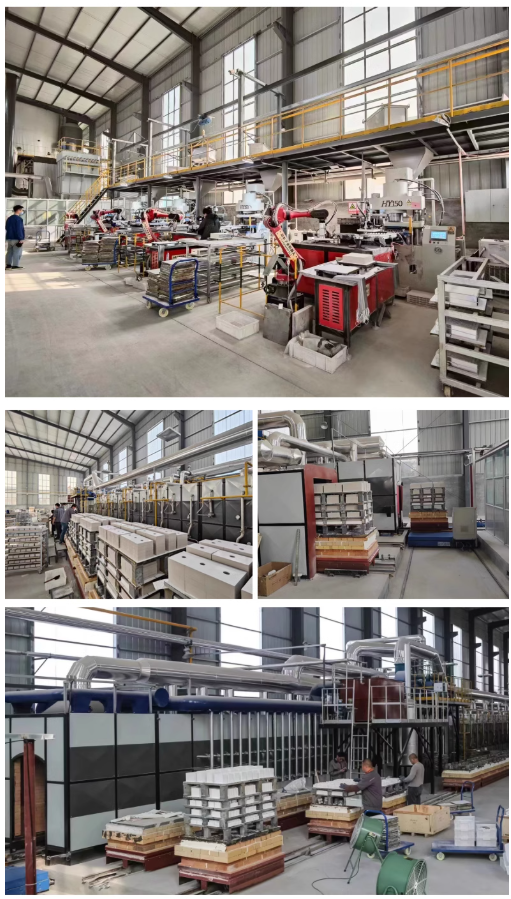
Payment Methods
T/T, Western Union, Paypal, Credit Card etc.
Shipment Methods
By air, by sea, by express, as customers request.
5 FAQs of Insulating bulk ceramic fiber or biosoluble fiber for various ceramic fiber products.
People often ask about ceramic fiber insulation. This includes bulk ceramic fiber and biosoluble fiber. Here are common questions and answers.
What exactly is ceramic fiber insulation? It is a man-made material. Manufacturers make it from melted alumina and silica. They spin it into lightweight, fluffy fibers. People use it for high-temperature insulation. It works well in furnaces, kilns, and boilers. It keeps heat inside effectively.
What is biosoluble fiber? Why choose it? Biosoluble fiber is a special type. It dissolves in lung fluid over time. Standard ceramic fiber stays in the lungs longer. This makes biosoluble fiber safer for people handling it. Many places now prefer biosoluble fiber for health reasons.
How hot can ceramic fiber handle? It depends on the specific product grade. Most ceramic fiber handles temperatures between 1260°C (2300°F) and 1430°C (2600°F). Always check the manufacturer’s rating for your specific product. Using it beyond its rating damages the fiber.
Is ceramic fiber dangerous? New ceramic fiber products pose little risk when installed correctly. Old ceramic fiber products might contain materials now considered harmful. Breathing in loose fibers is not good. Always follow safety rules. Wear proper masks and protective clothing during installation or removal. Biosoluble fiber offers a safer option.
Where do people use bulk ceramic fiber? It is very versatile. People pack it into cracks and gaps. They use it to fill expansion joints. It backs up rigid insulation modules. People layer it for custom insulation blankets. It is a common choice for furnace repairs and maintenance.
REQUEST A QUOTE
RELATED PRODUCTS
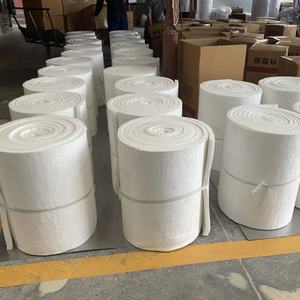
1mm, 2mm, 3mm, 4mm, 5mm thickness, 1260°C fireproof ceramic fiber wool paper
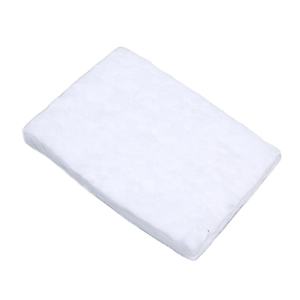
Insulating fire-resistant fiber blankets, aluminum silicate ceramic fiber felts.
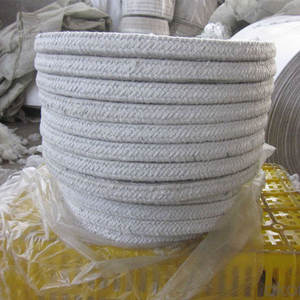
Ceramic Fiber Paper for various refractory applications.

Ceramic Fiber blanket s offer a variety of specifications and indicators for insulating fiber blankets.
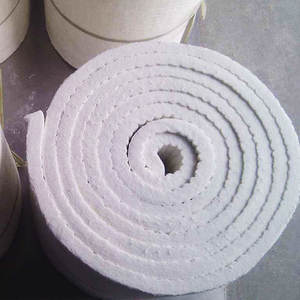
1260°C Free Sample of High-temperature Aluminosilicate Insulation Oven Refractory Ceramic Fiber Wool Blanket.
